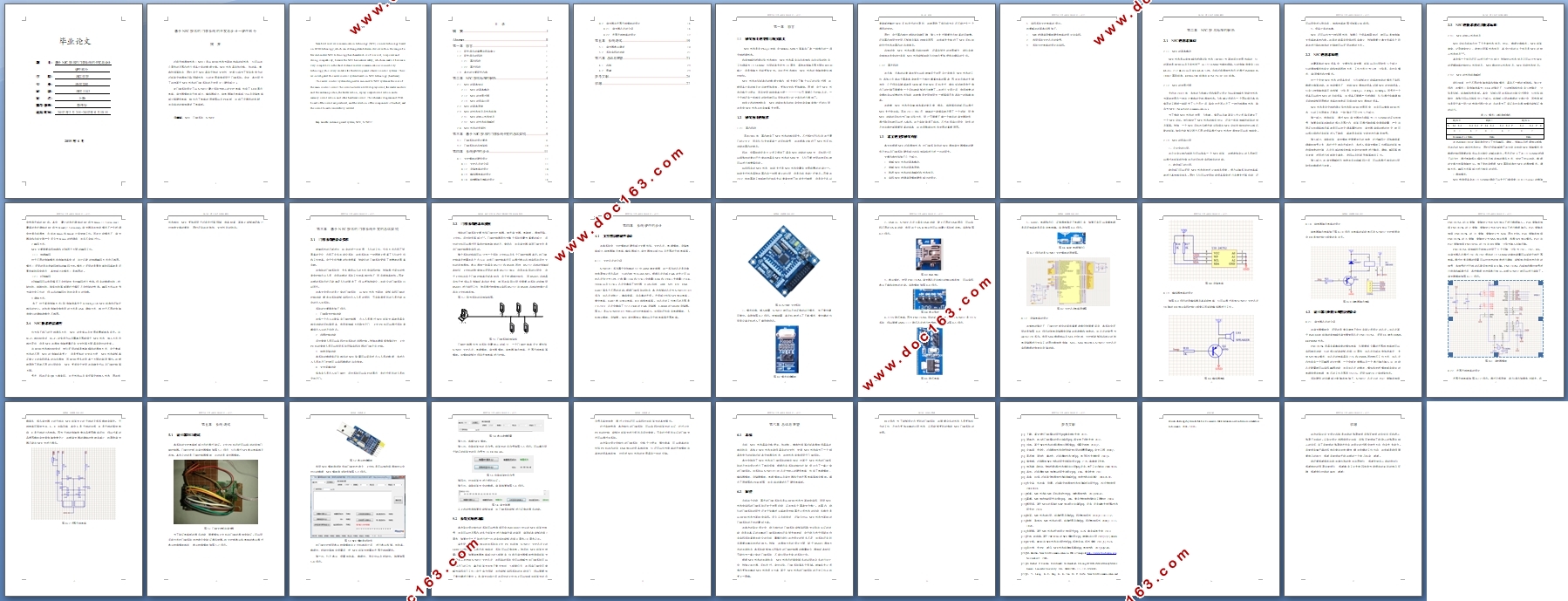基于NFC技术的门禁系统—硬件部分设计

基于NFC技术的门禁系统—硬件部分设计(任务书,开题报告,论文10000字)
摘 要
近场无线通信技术(NFC)是以RFID技术为基础形成的新技术,它可以在几厘米的范围内进行设备之间的数据交换。NFC技术具有低价格、低功率、兼容性强等特点,同时由于NFC具有天然的安全性,使得它成为了很有竞争力的近距离无线通信互联领域技术,它的发展非常适用于门禁系统。由此,本文研究了这种基于NFC技术的门禁系统的开发设计(硬件部分)。
此门禁系统设计了以STM32最小系统为核心的主控电路,包含了LCD显示电路、读卡器模块与天线部分、蜂鸣器部分、继电器输出电路部分以及存储电路部分等硬件电路,制作出了电路的原理图以及PCB板,完成了元器件的选材,并且成功的焊接调试了电路板。
关键词:NFC 门禁系统 STM32
Abstract
Near-field wireless communication technology (NFC) is a new technology based on RFID technology, which can exchange data between devices within the range of a few centimeters.NFC technology has characteristics of low cost, low power and strong compatibility, because the NFC has natural safety, which can make it become a very competitive in the short distance wireless communications connectivity technology, this is very suitable for the development of access control systems. Thus we investigated this access control system based on NFC technology (hardware). [资料来源:Doc163.com]
This access control system designed to minimize STM32 system as the core of the main control circuit. The circuit includes a LCD display circuit, the reader module and the antenna portion, the buzzer section, replay output circuit section and a memory circuit section and other hardware circuit. The schematic diagram and PCB board of the circuit are produced, and the selection of the components is finished, and the circuit board is successfully welded.
Key words: entrance guard system; NFC; STM32
[来源:http://www.doc163.com]

目 录
摘 要 I
Abstract II
第一章 前言 1
1.1 研究项目的背景与现实意义 1
1.2 研究项目的现状 1
1.2.1 国内现状 1
1.2.2 国外现状 2
1.3 本文的主要研究内容 2
第二章 NFC技术标准的解析 4
2.1 NFC的基本知识 4
2.1.1 NFC的基本概念 4
2.1.2 NFC的发展过程 4
2.1.3 NFC的现实应用 4
2.2 NFC的基本原理 5
2.3 NFC的技术规范及技术标准 6 [资料来源:http://Doc163.com]
2.3.1 NFC的核心技术规范 6
2.3.2 NFC的技术标准解析 6
2.4 NFC技术的优越性 7
第三章 基于NFC技术的门禁系统开发的总体架构 9
3.1 门禁系统的设计要求 9
3.2 门禁系统的总体架构 10
第四章 系统硬件的设计 11
4.1 主控模块的硬件设计 11
4.1.1 主控芯片的介绍 11
4.1.2 存储电路的设计 14
4.1.3 蜂鸣器电路的设计 15
4.1.4 继电器输出电路的设计 16
4.2 读卡器与外围天线模块的设计 16
4.2.1 读卡器芯片的介绍 16
4.2.2 外围天线电路的设计 17
第五章 系统调试 19
5.1 读卡器串口调试 19
5.2 系统实现的功能 21
第六章 总结与展望 23
6.1 总结 23
6.2 展望 23
参考文献 25
致谢 27 [资料来源:http://www.doc163.com]
